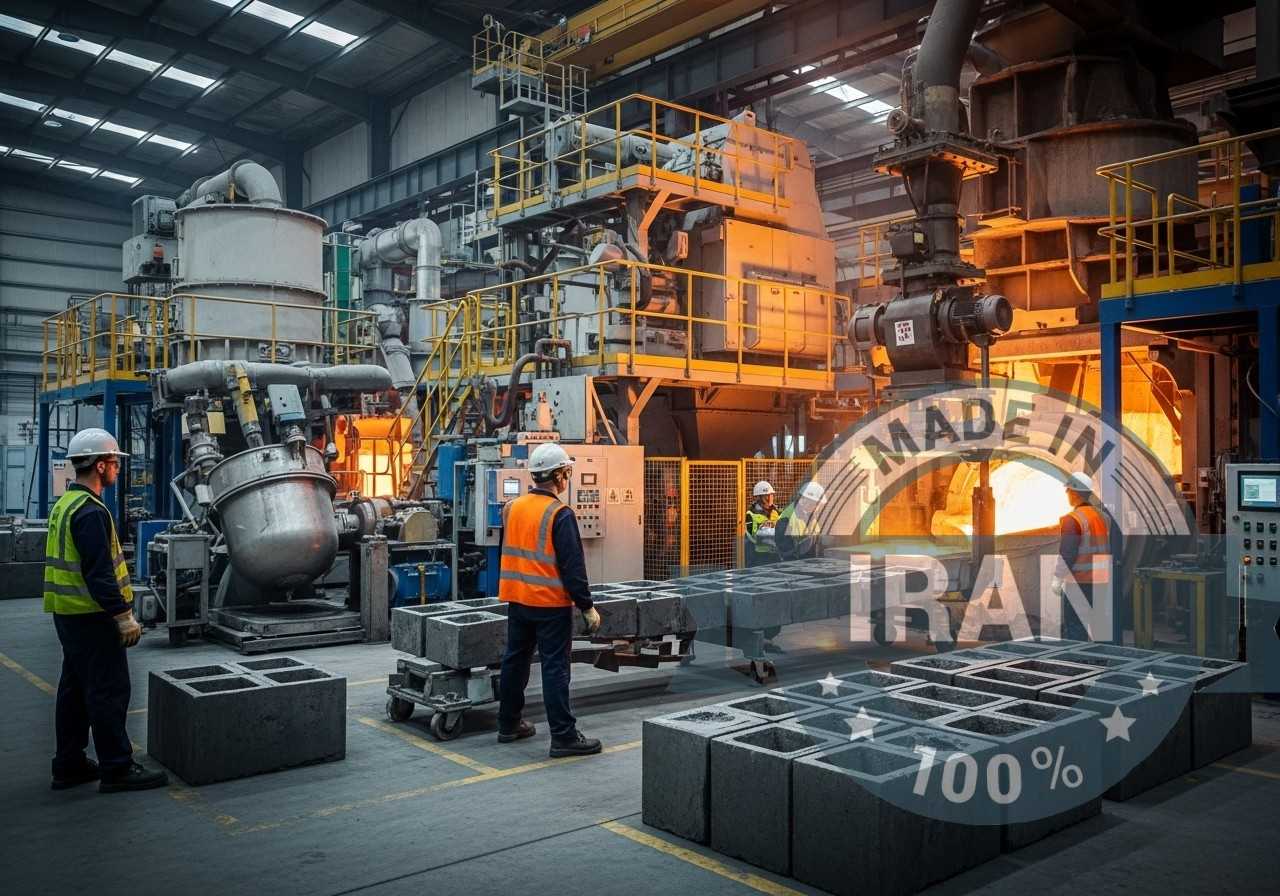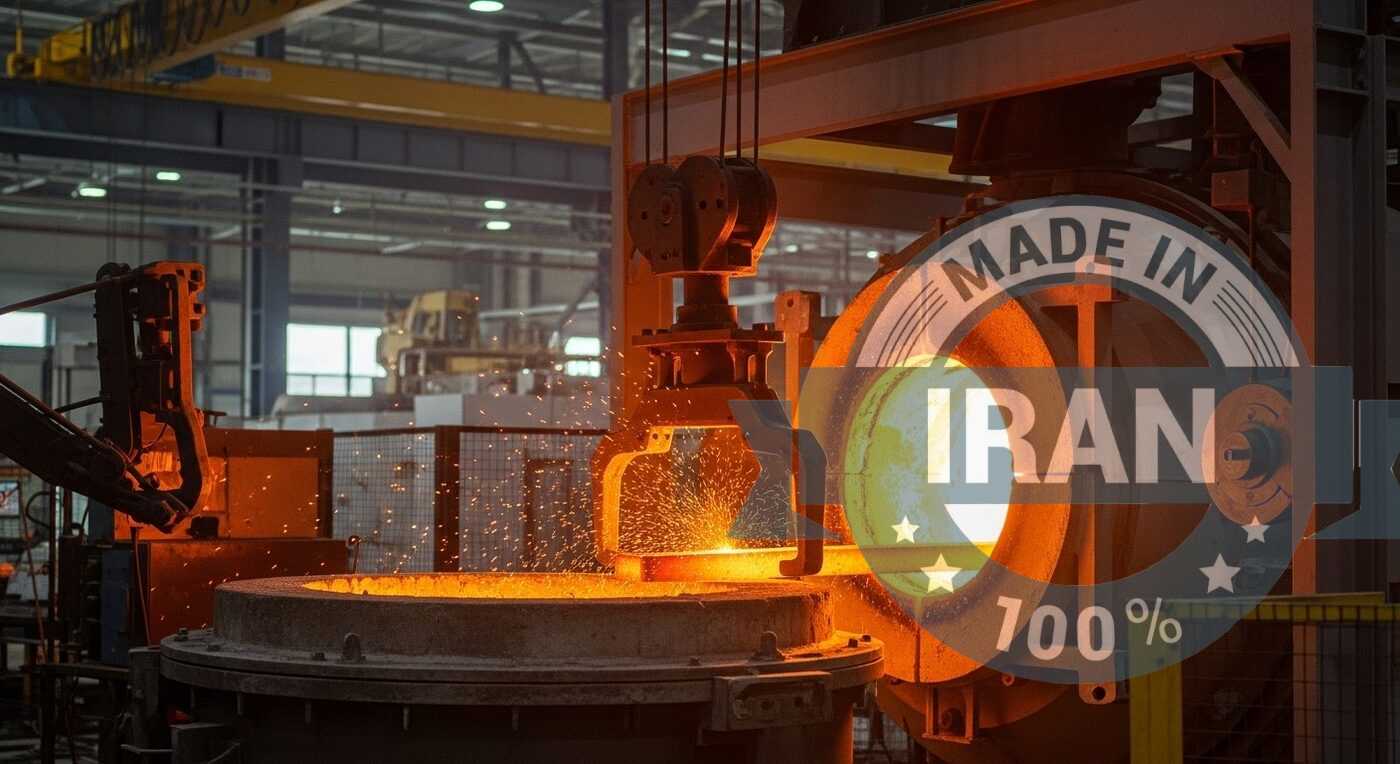Introduction: Mastering Extreme Thermal Cycling in Forge Applications
The demanding environment of forge operations presents unique challenges for refractory materials, where rapid temperature fluctuations, mechanical abuse, and chemical corrosion combine to create one of the most severe service conditions in industrial heating. Iranian refractory manufacturers have developed specialized formulations specifically engineered to withstand these extreme conditions while maintaining operational efficiency and cost-effectiveness.
Forge refractories must balance multiple competing requirements: excellent thermal shock resistance, high mechanical strength, adequate insulation properties, and resistance to chemical attack from scale and combustion products.
1. Understanding Forge Refractory Requirements
The Unique Demands of Forge Applications
Forge operations subject refractories to conditions rarely encountered in other industrial processes:
-
Thermal Cycling: Rapid heating and cooling from ambient to 1400°C+
-
Mechanical Impact: Constant loading/unloading of workpieces
-
Chemical Attack: Oxidation from scale formation and combustion gases
-
Abrasion: Movement of heavy materials across refractory surfaces
-
Temperature Gradients: Extreme differences between hot face and cold face
Critical Performance Parameters
| Parameter | Minimum Requirement | Optimal Performance | Test Method | Importance in Forge Applications |
|---|---|---|---|---|
| Thermal Shock Cycles | 25+ cycles | 40+ cycles | ASTM C1100 | Critical for rapid temperature changes in forge operations |
| Cold Crushing Strength | 50 MPa | 80+ MPa | ASTM C133 | Essential for withstanding mechanical impact and load |
| Permanent Linear Change | ±1.0% | ±0.5% | ASTM C113 | Indicates dimensional stability at high temperatures |
| Abrasion Resistance | 10 cm³ | 5 cm³ | ASTM C704 | Important for resistance to material handling wear |
| Thermal Conductivity | 1.5 W/m·K | 1.0 W/m·K | ASTM C201 | Affects energy efficiency and heat retention |
2. Material Selection Guide for Different Forge Types
2.1 Hammer Forges and Press Forges
Recommended Materials:
-
High-Alumina Brick (75-85% Al₂O₃)
-
Excellent impact resistance
-
Good thermal shock properties
-
Moderate spalling resistance
-
Technical Specifications:
| Property | Value Range | Notes |
|---|---|---|
| Alumina Content | 75-85% | Provides strength |
| Apparent Porosity | 18-22% | Balances properties |
| Bulk Density | 2.7-2.9 g/cm³ | Optimal for impact |
| Thermal Conductivity | 1.8-2.2 W/m·K | Energy efficiency |
2.2 Rotary Hearth Forges
Recommended Materials:
-
Insulating Castable Systems
-
Monolithic construction
-
Rapid repair capability
-
Good thermal efficiency
-
2.3 Batch Type Forge Furnaces
Recommended Materials:
-
Composite Lining Systems
-
Hot face: High-alumina brick or castable
-
Backup: Insulating firebrick or castable
-
Total thickness: 300-450 mm
-
3. Technical Properties Comparison
Comprehensive Material Selection Matrix
| Material Type | Max Service Temp | Thermal Shock | Abrasion | Corrosion | Cost Efficiency |
|---|---|---|---|---|---|
| High-Alumina Brick | 1650°C | Excellent | Good | Good | High |
| Insulating Castable | 1400°C | Good | Fair | Good | Medium |
| Dense Castable | 1500°C | Good | Excellent | Excellent | Medium-High |
| Ceramic Fiber | 1260°C | Excellent | Poor | Fair | Low |
| Phosphate Bonded | 1450°C | Excellent | Good | Excellent | High |
Performance Under Actual Forge Conditions
4. Installation Best Practices
4.1 Brick Lining Installation
Critical Steps for Success:
-
Surface Preparation
-
Clean, dry substrate
-
Proper anchoring system
-
Expansion joint planning
-
-
Laying Technique
-
Tight joints (max 2mm)
-
Staggered bond pattern
-
Proper curing sequence
-
-
Quality Control
-
Joint thickness monitoring
-
Plumb and level verification
-
Compression testing
-
4.2 Castable Installation
Expert Recommendations:
-
Water Control: Strict adherence to manufacturer’s specifications
-
Vibration: Proper consolidation without segregation
-
Curing: Controlled moisture retention during initial set
-
Drying: Gradual temperature ramp-up to prevent steam spalling
5. Maintenance & Lifespan Optimization
5.1 Preventive Maintenance Schedule
| Time Period | Inspection Type | Maintenance Actions | Expected Outcomes |
|---|---|---|---|
| Weekly | Visual | Surface cleaning Joint inspection |
Early problem detection |
| Monthly | Detailed | Crack monitoring Wear measurement |
Preventive planning |
| Quarterly | Comprehensive | Thickness measurement Anchor check |
Life prediction |
| Annual | Full shutdown | Thermal imaging Core sampling |
Complete assessment |
5.2 Common Problems and Solutions
Problem: Thermal Spalling
-
Causes: Rapid temperature changes, moisture ingress
-
Solutions: Improved preheating schedule, better material selection
Problem: Chemical Attack
-
Causes: Scale buildup, combustion products
-
Solutions: Protective coatings, material upgrades
Problem: Mechanical Damage
-
Causes: Impact from workpieces, thermal stress
-
Solutions: Impact-resistant materials, design modifications

6. Cost Analysis & ROI Calculation
Total Cost of Ownership Comparison
| Cost Component | Standard Materials | Optimized Materials | Custom Solutions |
|---|---|---|---|
| Initial Installation | $100,000 | $120,000 | $150,000 |
| Annual Maintenance | $40,000 | $25,000 | $15,000 |
| Energy Consumption | $180,000 | $160,000 | $140,000 |
| Production Losses | $60,000 | $30,000 | $15,000 |
| 3-Year Total | $1,140,000 | $1,005,000 | $930,000 |
| ROI vs Standard | Baseline | +12% | +18% |
7. FAQ – Forge-Specific Technical Questions
Q1: What is the optimal thickness for forge furnace linings?
A: The optimal thickness depends on several factors:
-
Hammer forges: 300-350 mm (high mechanical stress)
-
Batch furnaces: 350-450 mm (thermal efficiency focus)
-
Continuous forges: 250-300 mm (rapid cycling)
-
Rotary hearth: 200-250 mm (weight considerations)
Q2: How do we handle emergency repairs in operating forges?
A: Emergency repair protocols:
-
Hot patching materials: Special air-setting castables
-
Temporary solutions: Ceramic fiber blankets and patches
-
Rapid-cure products: 2-4 hour commissioning times
-
Safety procedures: Certified hot work protocols
Q3: What are the signs that forge refractories need replacement?
A: Key indicators include:
-
Visible damage: Cracks >3mm width, spalling areas
-
Performance issues: Longer heat-up times, temperature instability
-
Energy consumption: Increase of 15%+ from baseline
-
Surface temperature: 50°C+ above design on cold face
Q4: Can we mix different refractory types in the same forge?
A: Yes, with careful planning:
-
Compatible expansion characteristics
-
Proper transition design
-
Chemical compatibility assurance
-
Professional engineering recommended
Q5: What is the typical delivery time for specialized forge refractories?
A: Production timelines:
-
Standard materials: 2-4 weeks
-
Custom formulations: 6-8 weeks
-
Emergency orders: 1-2 weeks (premium charge)
-
Large projects: 8-12 weeks with phased delivery
Q6: How do Iranian forge refractories compare internationally?
A: Competitive advantages:
-
Quality: Meet ASTM/ISO standards consistently
-
Performance: Comparable to European products in testing
-
Cost: 30-40% lower than equivalent Western products
-
Delivery: Reliable supply chain with multiple shipping options
-
Technical support: Engineering expertise available globally
8. International Standards Compliance
Quality Assurance Framework
Material Certification:
-
ASTM C133 – Cold Crushing Strength
-
ASTM C704 – Abrasion Resistance
-
ASTM C113 – Permanent Linear Change
-
ISO 10081 – Classification of dense shaped refractory products
Manufacturing Standards:
-
ISO 9001:2015 Quality Management
-
ISO 14001 Environmental Management
-
OHSAS 18001 Safety Management
Performance Validation
Getting Started with Optimized Forge Solutions
Contact our forge specialists for a comprehensive assessment of your current lining performance. We provide:
-
Free thermal imaging analysis
-
Wear pattern assessment
-
Material recommendation report
-
ROI calculation for upgrades
-
Installation technical support
Most forge operations achieve 20-35% cost reduction through optimized refractory selection and proper maintenance practices.

